 |
 |
 |
| |
Aging and HIV: What Is the Gap Between Clinical Practice and Guideline Recommendations? In Europe
|
| |
| |
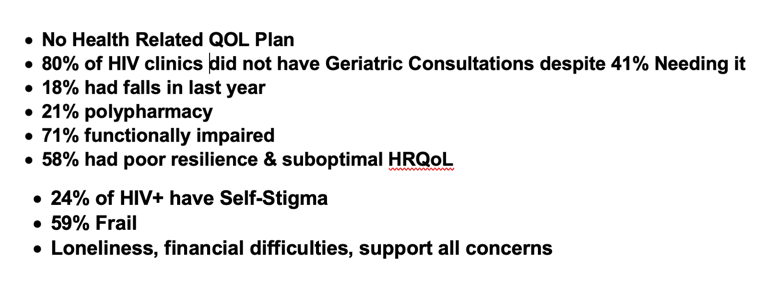
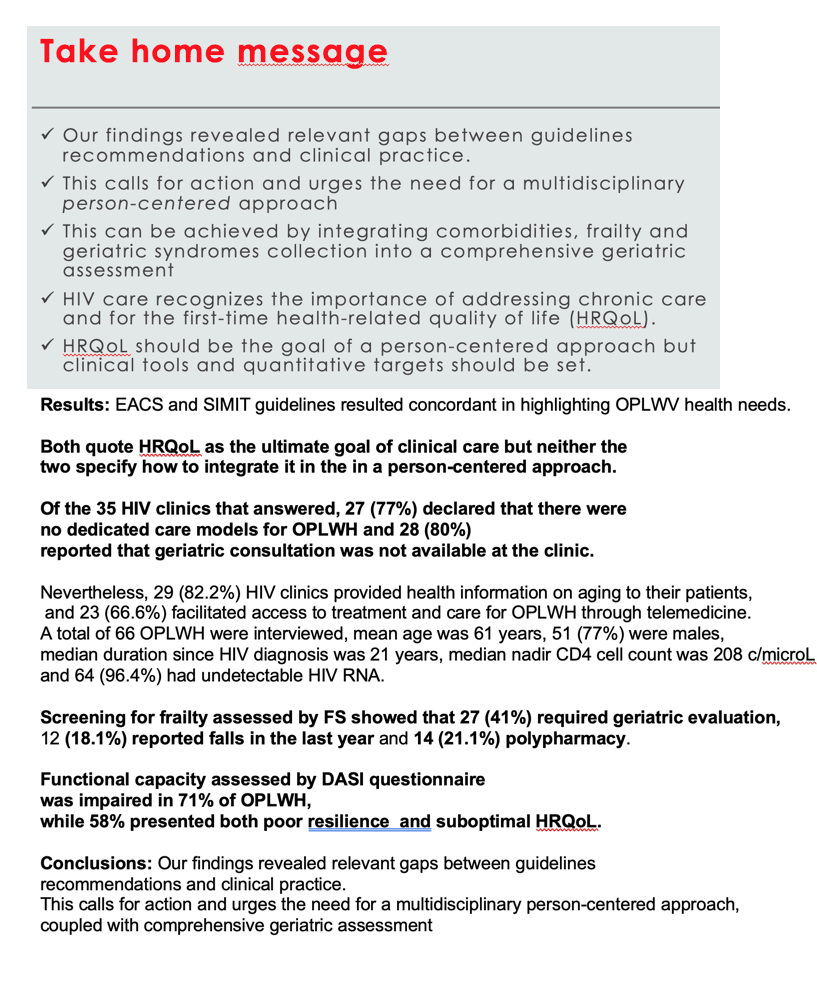
Aging Workshop Oct 14-15 2022
Reported by Jules Levin
Guaraldi G1,2,3, Brogonzoli L4, Marchetti G5, Gori A6,7, Rizzardini G8, Milic J1,2, Saltini P6,7, Falcinella C5, Sacchi M4, Iardino R4
1Metabolic Clinic, University Of Modena And Reggio Emilia, Modena, Italy, 2Department of Surgical, Medical, Dental and Morphological Sciences, University of Modena and Reggio Emilia, , Modena, Italy, 3Department of Infectious Diseases, Azienda Ospedaliero-Universitaria, Policlinico of Modena, Modena, Italy, 4The Bridge Foundation
(Fondazione The Bridge), Milano, Italy, 5Clinic of Infectious Diseases and Tropical Medicine, San Paolo Hospital, ASST Santi Paolo e Carlo, Department of Health Sciences, University of Milan, Milan, Italy, 6Infectious Diseases Unit, Fondazione IRCCS Ca' Granda Ospedale Maggiore Policlinico, Milan, Italy, 7Department of Pathophysiology and Transplantation, University of Milano, Milan, Italy, 8I Division of Infectious Diseases, ASST Fatebenefratelli Sacco, Luigi Sacco Hospital, Milan, Italy
ABSTRACT
Background: European AIDS Clinical Society
(EACS 11.0, 2021) and Società Italiana di Malattie Infettive e Tropicali (SIMIT 2017) guidelines on HIV treatment provide specific statements regarding models of care for older people living with HIV (OPLWH).
The objective of the study was to explore unmet needs of OPLWH regarding the compliance of Italian HIV clinics to the national and international recommendations on HIV aging care.
Methods:
Part 1: EACS and SIMIT guidelines were compared regarding specific statements addressing OPLWH care needs. These included items such as co-morbidities, multimorbidity, polypharmacy, frailty and falls. A synoptic table was built to summarize key statements and agreements between guidelines. These statements were used to build a survey exploring aging model of care and unmet clinical needs.
Part 2: This was a cross sectional country wide survey offered to all HIV clinics and their attendees aged>50 years in Italy in the week including World AIDS day (1st December 2021). The survey was composed of two parts: the first was referred to health care workers or OPLWH, while the second was referred to OPLWH addressing health domains including: frailty through Frailty scale (FS), resilience through CD-RISC-2, functional capacity by self-reported Duke Activity Status Instrument
(DASI), health-related quality of life (HRQoL) through EQ-5D-5L questionnaire. Other collected geriatric syndromes included falls and polypharmacy. Questions regarding stigma, isolation, loneliness, sex life, social support, and relationships were also included.
Results: EACS and SIMIT guidelines resulted concordant in highlighting OPLWV health needs.
Both quote HRQoL as the ultimate goal of clinical care but neither the two specify how to integrate it in the in a person-centered approach.
Of the 35 HIV clinics that answered, 27 (77%) declared that there were no dedicated care models for OPLWH and 28 (80%) reported that geriatric consultation was not available at the clinic.
Nevertheless, 29 (82.2%) HIV clinics provided health information on aging to their patients, and 23 (66.6%) facilitated access to treatment and care for OPLWH through telemedicine. A total of 66 OPLWH were interviewed, mean age was 61 years, 51 (77%) were males, median duration since HIV diagnosis was 21 years, median nadir CD4 cell count was 208 c/microL and 64 (96.4%) had undetectable HIV RNA.
Screening for frailty assessed by FS showed that 27 (41%) required geriatric evaluation, 12 (18.1%) reported falls in the last year and 14 (21.1%) polypharmacy.
Functional capacity assessed by DASI questionnaire was impaired in 71% of OPLWH, while 58% presented both poor resilience and suboptimal HRQoL.
Conclusions: Our findings revealed relevant gaps between guidelines recommendations and clinical practice. This calls for action and urges the need for a multidisciplinary person-centered approach, coupled with comprehensive geriatric assessment and screening tools to assess comorbidities, frailty and geriatric syndromes, using HRQoL as a key outcome measure in OPLWH.
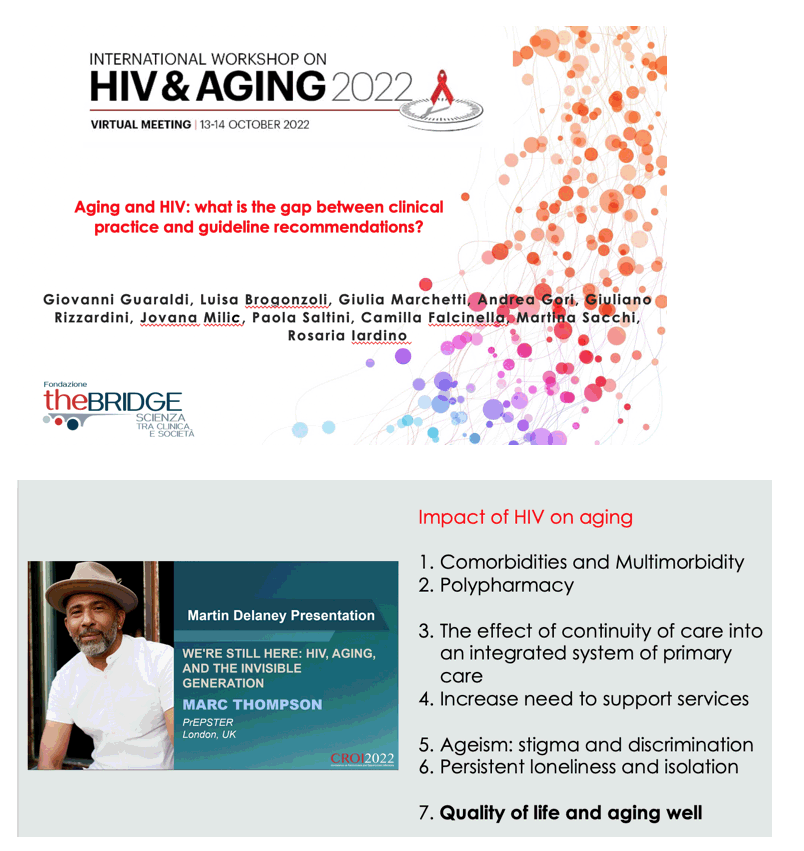
Let us start from Croi
Marc Tomson geve us a very good narrative of his esperience of a man aging with hiv and stressed
Some of these issues refers to the biology of aging, MM and PP
others to the way aging impact the cascade of care and the need to support services
and finaly Agism that is the stigma of being old, no more hansome (particualrly strong within the gay comunity) or being slow which most of the time is added to the Hiv stigma
He then ended up to say that aging drives poor QOL
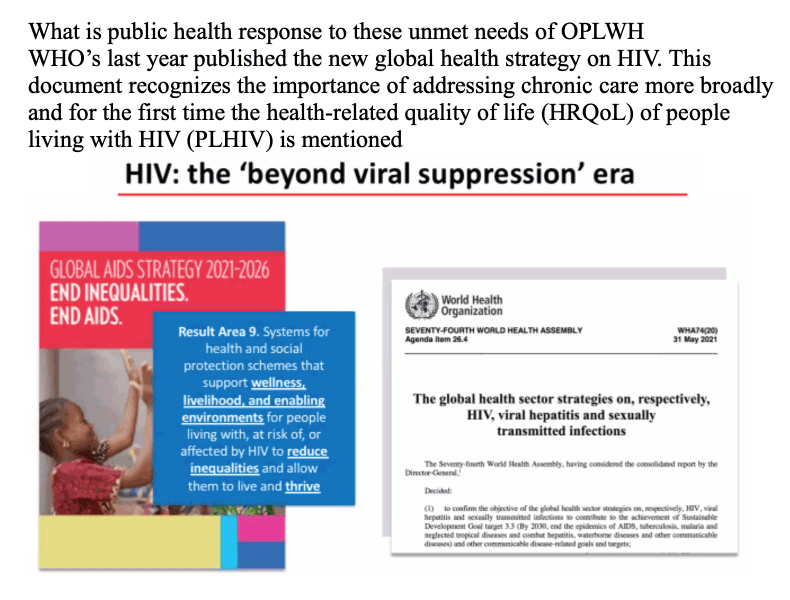
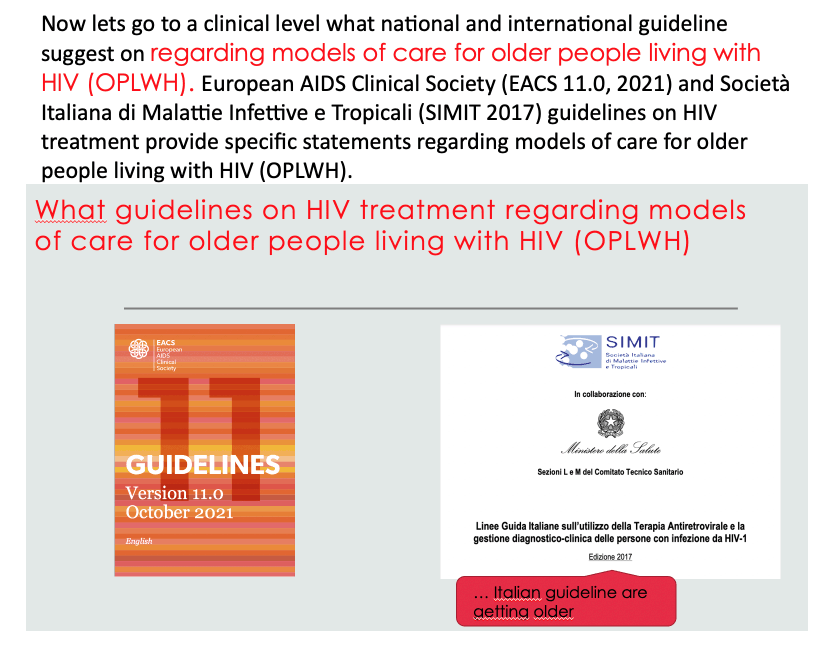
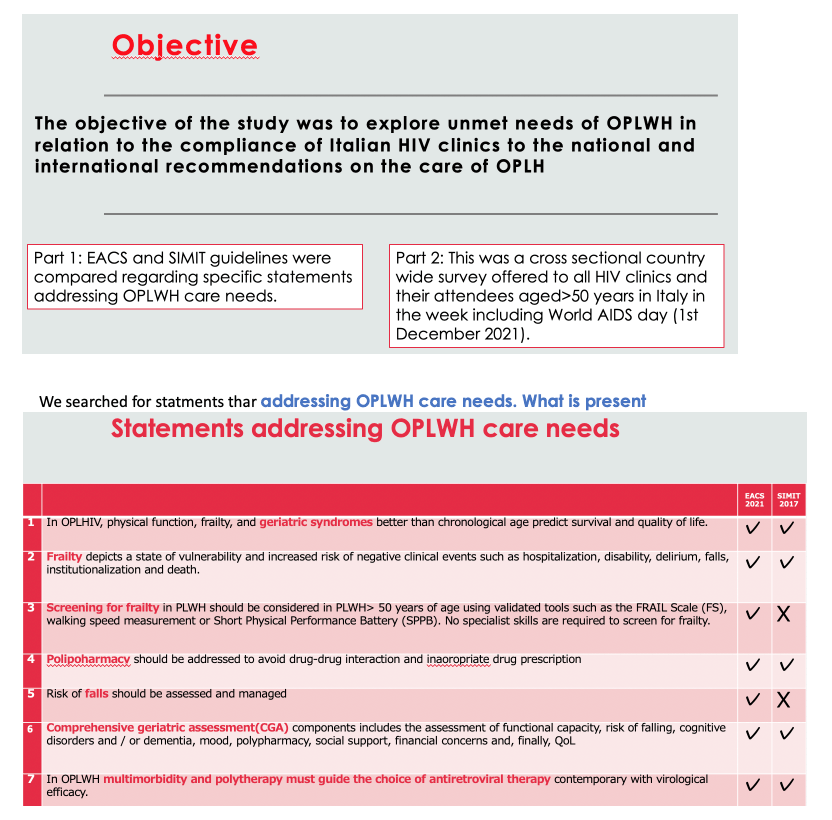
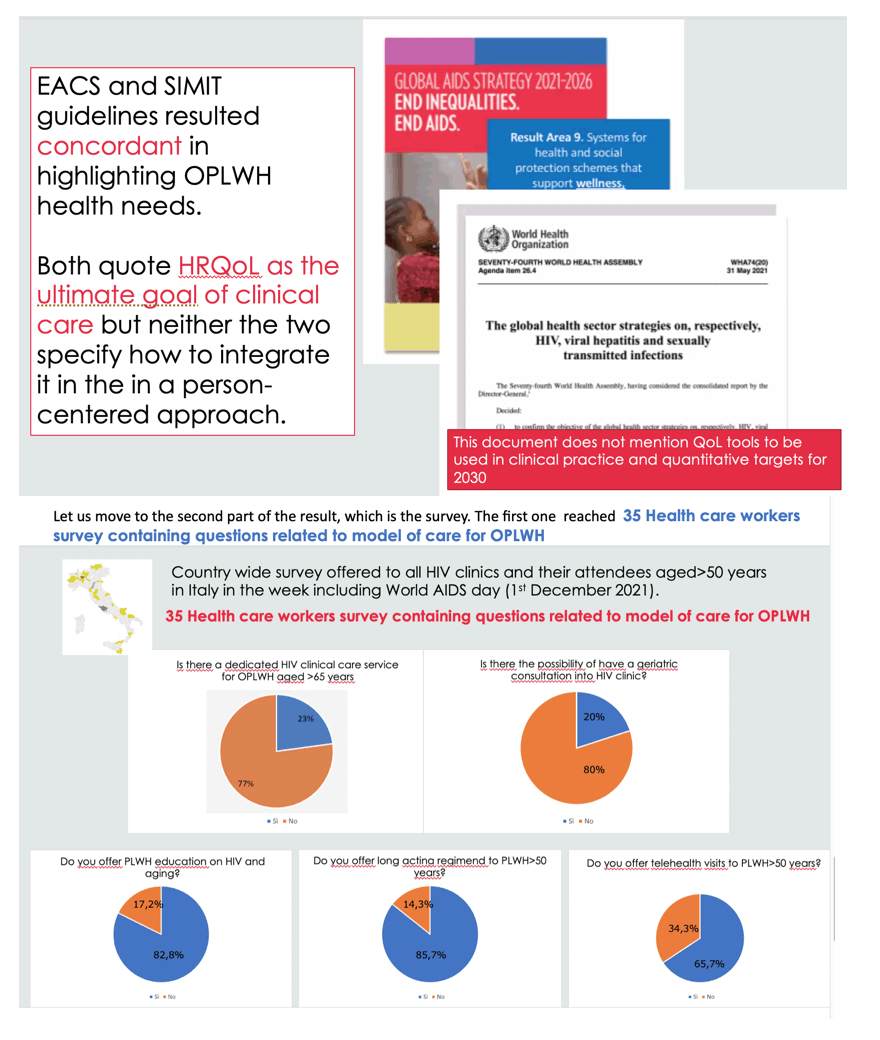
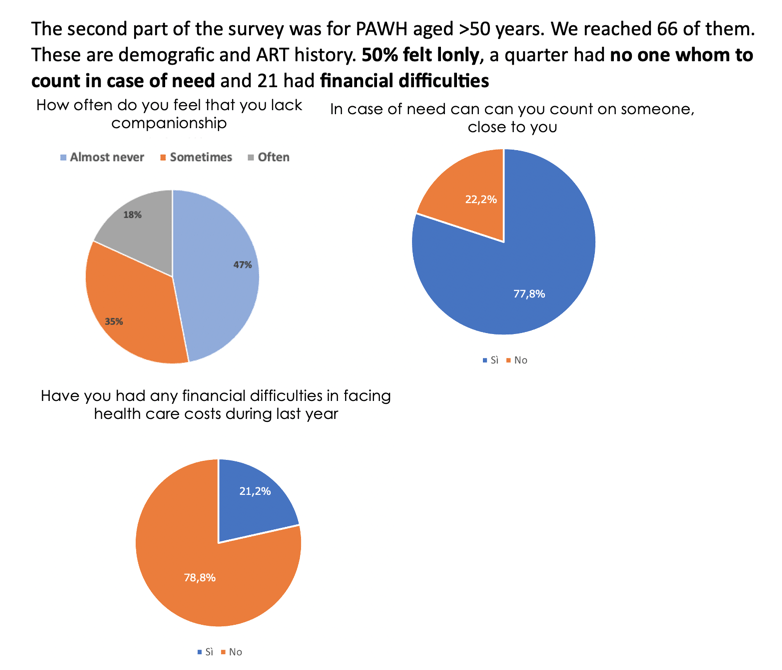
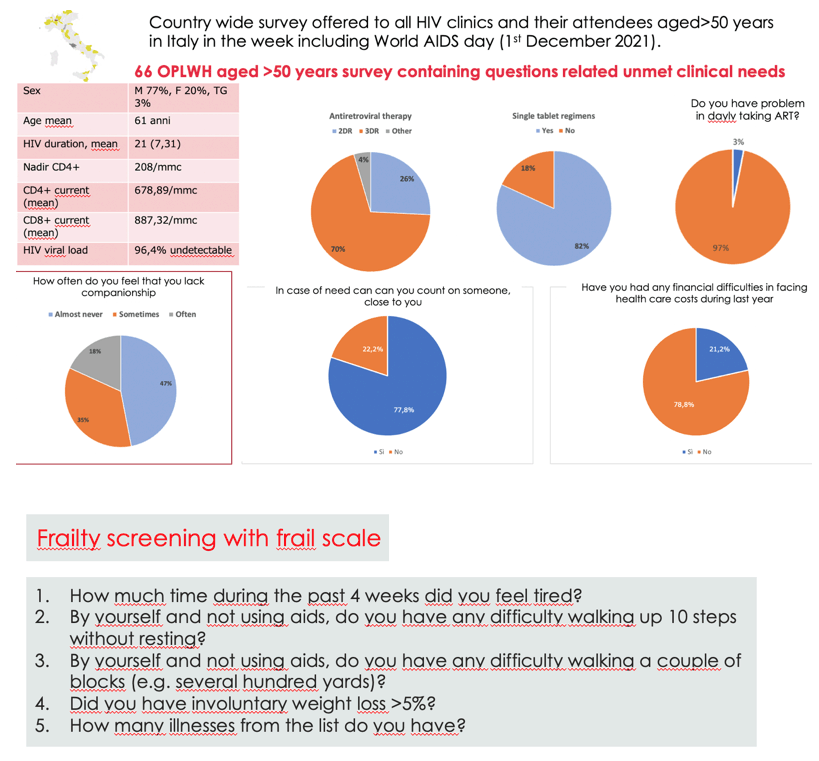
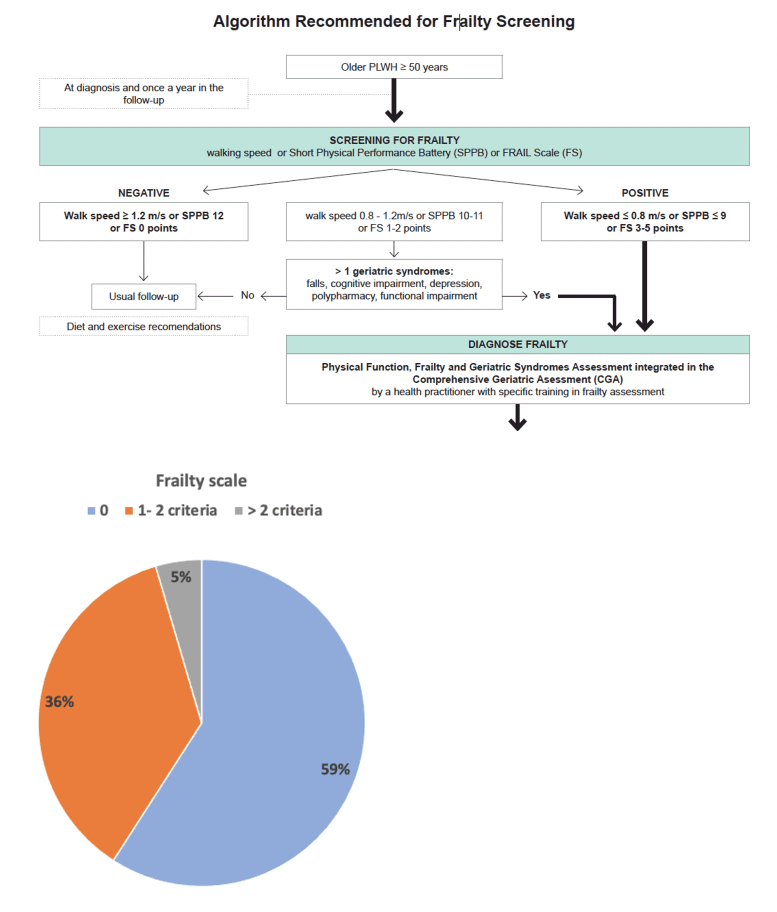
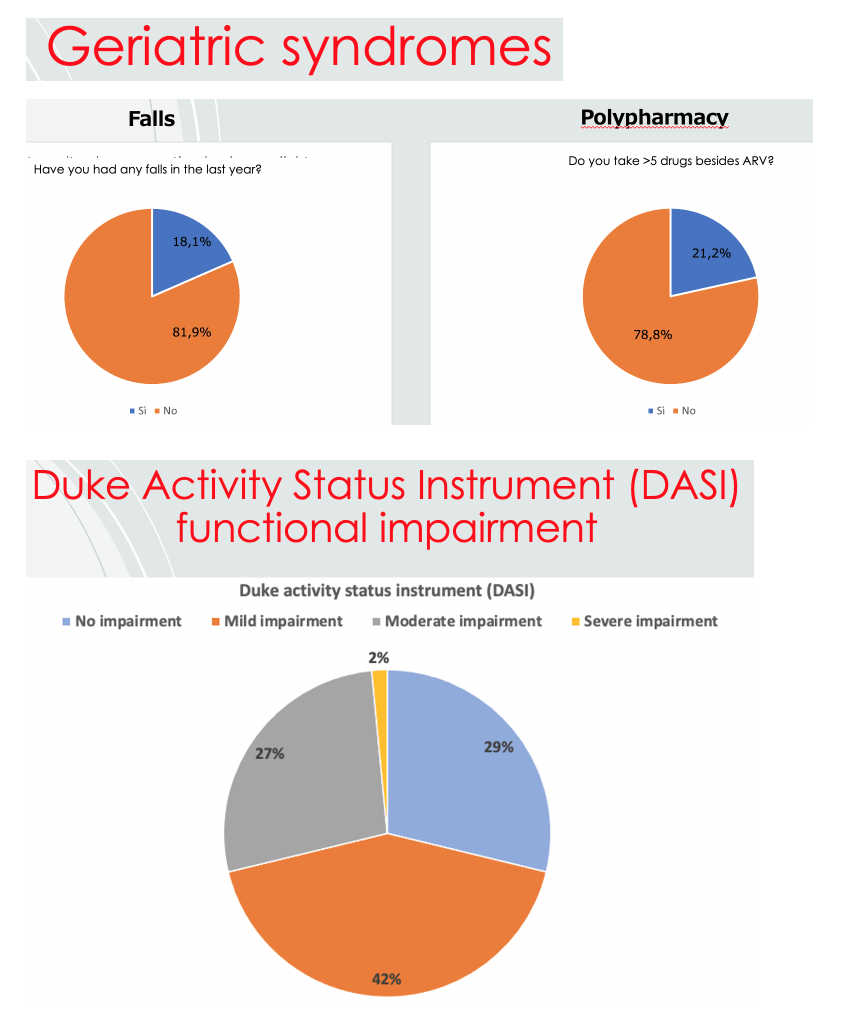
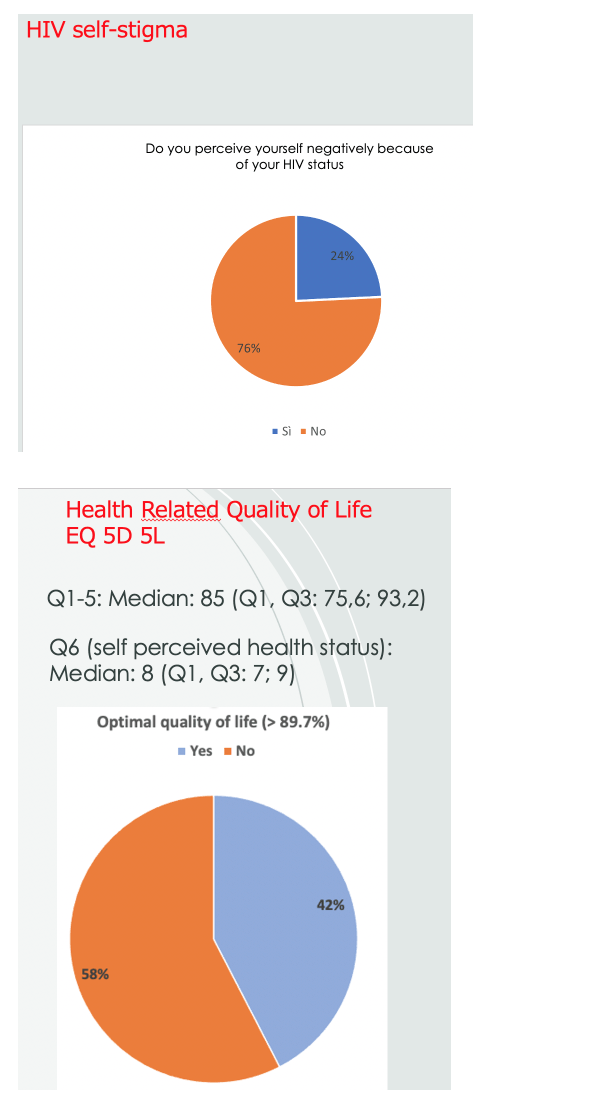
|
| |
|
 |
 |
|
|